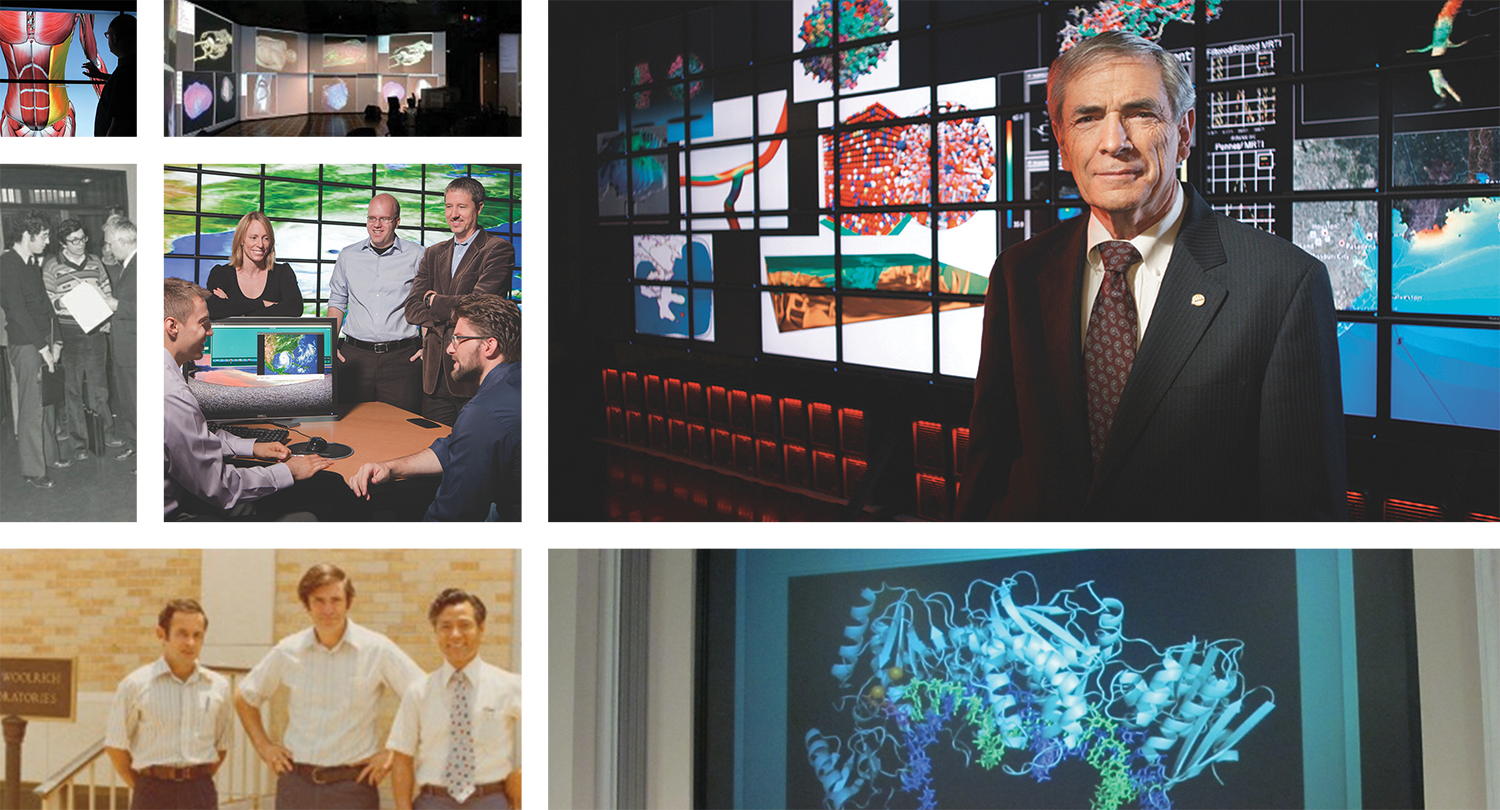People & Programs
Joanne Foote
A Powerful Vision: 50 Years of the Oden Institute
J. Tinsley Oden reflects on Institute’s 50th anniversary, early formation, and relationship with TACC

High performance computing (HPC) has enabled transformative research at UT Austin for more than 60 years.
When J. Tinsley Oden joined the faculty in 1973 as a professor of aerospace engineering and engineering mechanics, campus HPC facilities were simplistic by today’s standards. The establishment 50 years ago of what is now known as the Oden Institute for Computational Engineering and Sciences set the stage for growth of HPC and the formation of TACC.
At the core of ground-breaking research discoveries, rendered through dazzling images splashed across journal covers, is computational science, without which new discoveries in the fields of climate, medicine, science, and technology would take exponentially more time to achieve.
Dr. Oden, the Institute founding director and pioneer of computational mechanics, died on August 27, 2023, a month shy of the Oden Institute’s 50th anniversary celebration. Earlier in the summer he reflected on his years at UT and the subsequent growth and evolution of HPC.
“While working on my dissertation in 1962, I was one of the first students to access our IBM 650, the big computer of the day, teaching ourselves FORTRAN and I made a stab at programming algorithms to analyze thin elastic plate systems,” Oden said.
“Dr. Oden was arguably the single most important person in promoting the need for TACC, and HPC, which has kept UT at the forefront of advanced research and development. The Computational Visualization Center and the VisLab, managed by TACC, were essential to O’Donnell’s vision.”
During his ensuing years teaching at the University of Alabama in Huntsville, Oden’s idea of combining interdisciplinary studies across sciences and engineering emerged. In Texas, three states away, HPC was gaining a foothold at UT.
A few years later, Oden accepted a faculty position at UT and began the Texas Institute for Computational Mechanics (TICOM), one of the first interdisciplinary computational programs in the world. “We formed a faculty group from different departments devoted to computational mechanics and expanded the scope of the work to general problems in continuum mechanics,” he said.
The 1980s brought new endowed chairs in engineering and sciences. However, the University’s HPC facilities didn’t reflect the same growth. The growing technology sector in Texas in the 1990s caught the interest of philanthropist Peter O’Donnell, Jr. and the O’Donnell Foundation (ODF) whose insight to bring diversity to the Texas economy proved central to the growth of HPC at UT.
With support from the ODF, the Institute changed its name to the Texas Institute for Computational and Applied Mathematics (TICAM), reflecting the integration of mathematics. Oden knew they stood on the precipice of a profound change.
“The United States finds itself in the midst of a great revolution in science and engineering that forever changed the way they are done, which impacts every facet of our lives,” he wrote in the TICAM 1994 Annual Report.
At the decade’s close, buoyed by new university leadership, Oden and O’Donnell submitted a proposal to the university top ranks for a long-range HPC plan, with funding from ODF. Following modifications, the approved plan led to the recruitment of key staff who were instrumental in revitalization of what is now known as the Texas Advanced Computer Center (TACC).
“There were some bumpy roads on the path to growth, but those hiring decisions put TACC onto the path it is now. It’s remarkable how far things have come,” said Oden.
“Dr. Oden was arguably the single most important person in promoting the need for TACC, and HPC, which has kept UT at the forefront of advanced research and development,” said Chandrajit Bajaj, director of the Computational Visualization Center at the Oden Institute. “The Computational Visualization Center and the VisLab, managed by TACC, were essential to O’Donnell’s vision.”
“Every field of science and engineering, medicine and social sciences relies on advanced computing for modeling, simulation, and prediction. These things are synergistic — HPC facilities help attract faculty, who then push their simulations to new frontiers, and then their work incentivizes further development of HPC,” said Omar Ghattas, director of the OPTIMUS Center at the Institute.
What started as a vision led by J. Tinsley Oden, combined with unwavering support of philanthropists Peter and Edith O’Donnell, university support, and Oden’s persuasive recruitment of talented computational scientists, has created a world-leading academic HPC center. The ongoing relationship between the Oden Institute and TACC is limited only by the boundaries of scientific discoveries.

